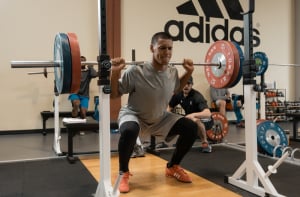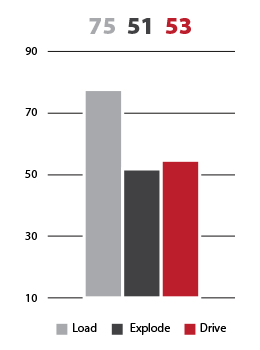
The acceptance of contact injuries as non-preventable is a widely accepted issue in sports, instead we have shifted our focus to reducing soft tissue setbacks such as a hamstring or calf injuries. Sure, non-contact ACL injury prevention is another focus in prevention protocols, but what does “non-contact” really mean? And can we even reduce this “contact” injury incidence?
Most ACL injury studies make an attempt to differentiate between injuries that resulted from direct contact and injuries that did not. The problem is that at this point there are not accepted standards differentiating between direct contact (DC) injuries, indirect contact (IC) and non-contact (NC) injuries. This makes it very difficult to compare separate ACL injury studies against one another, a point discussed in a 2010 paper titled, Recommendations for Defining and Classifying Anterior Cruciate Ligament Injuries in Epidemiologic Studies.
The paper classifies NCIC (non contact, indirect contact) ACL injuries as follows, “The defining features of the NCIC injury are that it results from the athlete’s own movements, which typically are disturbed by a physical or cognitive perturbation either during or immediately before the injury event.” We’re most concerned with the definition of these injuries because they are the ones we feel we can help prevent (as opposed to direct contact injuries).

Recent statistical analyses of our own data have revealed that athletes with an extreme LOAD, more than 15 units above the next variable, are sustaining increased incidences of knee injuries. Specifically, we’ve examined our own data to find that an athletes’ odds of sustaining a knee injury increases by a certain odds ratio for every increase of one t score unit of LOAD. In addition, the results were not affected by sport being played, or whether the injury was a result of direct contact or not.
This example is shown to the left, a Sparta Signature we would classify as extreme LOAD. We usually see a signature like this in athletes whose sport position requires a ton of stiffness (offensive lineman, catchers, front row in rugby). This signature shows an athlete that is too stiff. While the injury link is clear and significant, the mechanism is still a theory, likely caused by such extreme stiffness preventing flexion (bend and absorb) on impact or even contact.
The question becomes, how do we help athletes achieve a level of stiffness that increases their performance without putting them at risk for injury? We tend to see this extreme signature when an athlete whose sport position (like the ones mentioned above) creates high LOAD, and then they do exercises in the gym (like squatting) that also have been proven to increase LOAD. As coaches, the important thing to remember is that what is good for one athlete is not always good for another, the training stimulus that can help save one athlete from injury, can put another at risk. We need to take all types of stimulus into account when designing training, injury prevention and treatment programs.
If an offensive lineman or front row spends his practices squatting, should he really be squatting in the gym too?